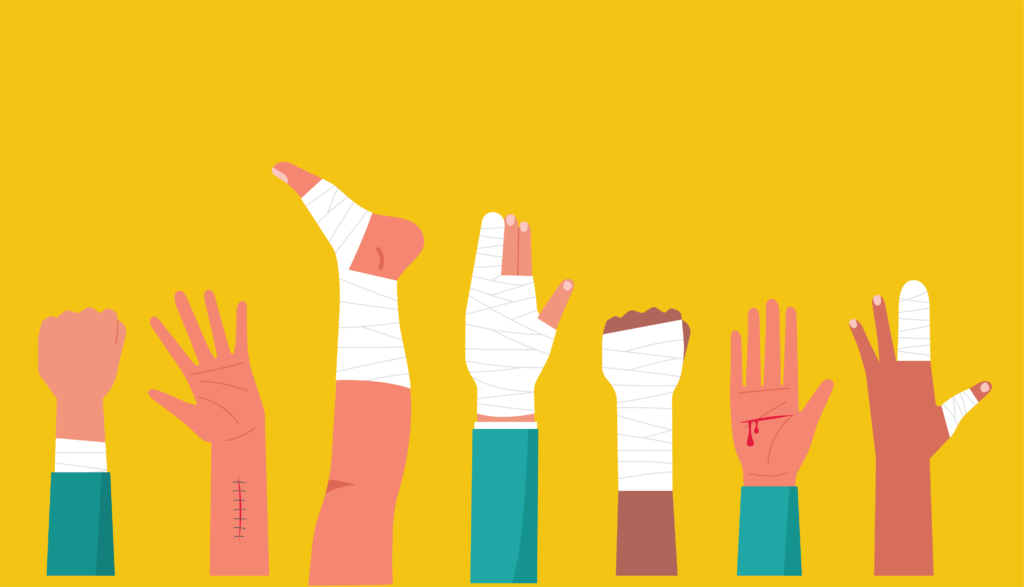
Improve Your Balance and Lengthen Your Life

Loss of balance leads to many issues as people age, contributing to most falls in the senior population. Balance affects the way we walk, sit, stand, and move. Although it may seem like a simple idea, understanding its complexities and contributing factors is key to managing it in our physical bodies. From there, we can understand and incorporate quick and simple exercises, likely improving our lifestyle and adding years to our life.
Find What You Need
Understanding Balance
Balance is the ability to maintain control of the body while performing certain activities. It is the coordination of different working systems of your body. The three systems of balance are: Proprioception (muscles, joints and skin), Vestibular (inner ear), and Vision. It is imperative for these systems to work together in order to maintain balance.
Proprioception (muscles and joints) is the one area we have most control over, in terms of our ability to take action without the assistance of a doctor. You can do this by adding some simple routine exercises and activities to your daily life. This article will focus on proprioception, and how those parts of your body “feel” and thus send messages to your brain on how to move. The better you are at shifting and distributing weight in your body, the more quickly you are at recovery, and less likely to fall. Learning how to take control of your body and the way it moves, through balance and strengthening exercises is fundamental to longevity.
What Affects Balance?
Posture: Good posture is crucial in order to maintain proper alignment of your body, and its different parts in its physical environment. Simply put it is the ability to sit up straight and stand firm, which most often declines with age.
Feet: When standing or sitting our feet are used to physically sense the surface below and maintain our stability.
Muscle Weakness: There are two planes of our body, the frontal and the posterior, which work together to stabilize you. Each muscle on the frontal plane has an opposing force on the posterior. While one muscle contracts, the other is stretched, and vice versa. Balance is maintained when the opposing muscles are proportionately strong and flexible. Appropriate muscle mass is essential to balance and thus fall-prevention.
Injuries: Injuries can both cause as well as affect one’s physical balance. Chronic pain of any part of our body can affect the way in which we walk and move, as well as our reaction time to stabilizing ourselves, or catching a fall.
Why is Balance So Important?
Balance control is fundamental to maintaining ones ability to move and function independently. Daily activities as simple as walking, getting around the house, driving, and feeding oneself all require it. Both physical safety and quality of life come in the ease of doing these tasks. Not only does balance prevent falls, but also when falls do occur, they happen more gracefully.
On average 36 million falls are reported each year in older adults, and 32,000 result in death. It is the leading cause of injury in older adults. Injuries not only negatively affect your quality of life, but your bank account as well. Think of strengthening your balance as fall-prevention and adding insurance to your life. The earlier you start, the stronger it builds.
Studies show that there is a positive correlation between lifespan and your mobility. On average, people who are able to stand-up without using their hands, have longer lives. You can test this by starting from a cross-legged position to standing by using only your legs and core. This test measures multiple factors including your longevity, heart health, flexibility and strength.
At-Home Balance Assessment
(For each of the tests below, place a stable object, such as a chair close by for safety, should you lose your balance).
The 10-Second Balance Test
Step 1: Stand with your feet together, and your hands down at your sides.
Step 2: Lift one foot at least 12 inches off the ground, keeping your arms down and gaze straight ahead.
Step 3: Count the seconds you are able to maintain this position without moving your arms up or bringing your foot down.
Repeat three times and calculate the average for your score. If you were able to maintain the 10-second balance test, you passed! Studies show that the risk of death was twice as high for those who were not able to complete the test.
The Romberg Test
In this test there are 4 positions which should be held 30-seconds each.
Position 1: Stand still, with your feet together on a firm surface
Position 2: With your eyes closed, stand still, with your feet together on a firm surface
Position 3: Stand still, with your feet together on an unstable surface (such as a soft pillow)
Position 4: With your eyes closed, stand still, with your feet together on an unstable surface
A person with normal balance should be able to easily complete all 4 positions. Difficulty with the 1st position indicates that you have problems with at least 2 of the systems. If you passed the first, but have difficult with the 2nd position it is likely that you are visually dominant, and have both vestibular and vision issues. If you passed the first two, but have difficulty with the 3rd it is likely that you have issues with your proprioception (sensations) and possibly your inner ear. If you passed the first three, but have difficulty with the 4th it is likely that you have issues with your inner ear alone
Vestibular (inner ear) and Vision Balance Assesments
(Please consult your doctor)
Simple Ways To Improve Your Balance
Yoga
The practice of Yoga improves balance not only in the balancing poses, but also by strengthening the muscles in the body, and increasing flexibility. (Working those two planes of the body and opposing muscle groups equally).
Core Stability
Your abs and back muscles are called your “Core” for a reason. They are the foundation of your movement and link to your upper and lower body. A stronger core takes the necessary work and weight off of your legs and arms. Importantly, it also supports your spine and therefore your posture. Your abs and back are opposing muscles, and therefore should be equally strong to maintain balance and reduce pain and injury.
Building Strength/Muscle Mass & Body Mechanics
Muscles are like the glue that holds everything steady by supporting the bones, joints and other systems of the body. Unfortunately we begin losing muscle mass in our 30s, as a normal part of the aging process. This is known as Sarcopenia. It tends to happen quicker with people who are not physically active throughout adulthood, however it does happen to everyone to a degree.
Sarcopenia also affects our nervous system by reducing the amount of signals being sent to the brain for muscle movement and coordination.
“Sit-to-Stand” Exercise
Begin by sitting in a sturdy chair with a table or something sturdy within arms reach. Scoot forward, so you are close to the edge, while maintaining your buttocks on the chair. Lean slightly forward with your chest. Place your feet down flat in front of you and sit up tall. Come up to standing while squeezing your glutes. If needed, you can place your hands on the chair to help you up. However, the goal is to come to a standing position without using your hands. Slowly lower back down to seated.
Repeat 10 times.
Myofascial Release (Trigger Point work)
While lifting weights or doing any form of strength training, our muscles are broken apart and as they come back together (or recover) are thus stronger. This is necessary because appropriate muscle mass is imperative to a healthy body. However, when the muscles are repaired often the fascia is pulled back together tightly and somewhat mishaped. Fascia is a myloin sheath between the muscle and skin. Think of it like a woven cloth, and as it pulls back together the woven fabric is twisted.
“Rolling out” the muscles using foam rollers, a tennis ball, baking pin, or other tools smooths out the sheath, and the tightness we feel in the area. As you do this you’ll notice some areas are more tender than others. These spots should be worked for a longer period of time. Afterwards, and the next day, you’ll notice a soreness that is somewhat different than from exercise. This is your muscles and fascia healing back together “smoothed out.”
Final Point
Maintaining ease and quality of life is important, especially as we age. It increases the time in which we can live independently, without assisted care. Those who stay ahead of the curve, by maintaining balance in the body earlier can greatly improve and lengthen their lifespan. Yet, don’t be discouraged if you didn’t act on it earlier, because it’s never too late to start. Begin a regular routine incorporating balancing exercises. It is recommended that all adults maintain this 3 days a week. First, begin with a balance assessment (for each of the 3 systems), and keep a record of your results. Next, choose the activities you’ll enjoy the most and incorporate a regular routine. Be sure to incorporate strengthening exercises into the routine, at least twice a week. It helps to keep a consistent schedule, as you’ll be more likely to remember. Luckily it doesn’t take long for results, and improved balance to occur. Within a couple of weeks you should begin noticing a difference in the way you feel, especially while completing daily activities. Lastly, hold yourself accountable by periodically reassessing your balance. Both seeing your progress on paper, as well as feeling better in your body and stability, reinforces the behavior and why it’s so important to your life.
Content on this site is for reference and information purposes only. Do not rely solely on this content, as it is not a substitute for advice from a licensed healthcare professional or personal trainer. Aging.com assumes no liability for inaccuracies. Consult with your doctor before beginning any new exercise program.


